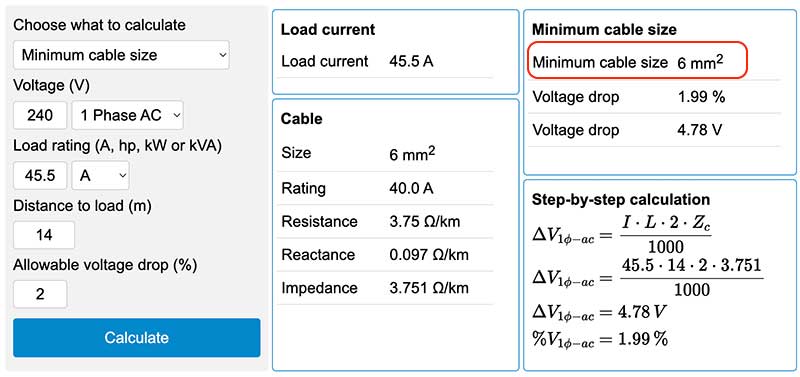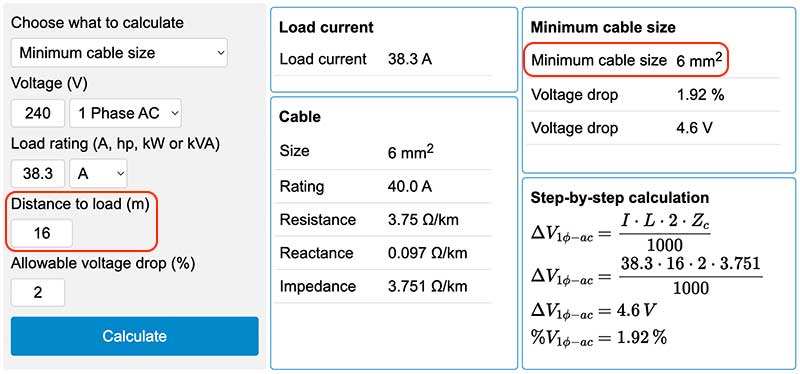I need a 10kW inverter, can I?
It depends. According to AS/NZS 3008, a correct size of inverter should be consider with the current, cable length and how much voltage drop.
Take a Growatt MIN 10kW inverter as an example, its Max AC output current is 45.5A, which also means the cable connected between it and switch board should be able to handle 45.4A. However, as the distance increases, even the largest wire will also create more resistance, so the current will reduce as it experience resistance ,and then the voltage will drop. Eventually results in power loss.
i need to install a 10kW inverter, the AC output is 45.5A, and the distance from my inverter to main switch board is 20m, so how much size for cable?
What size cable do I need then?
Example 1: Minimum cable size calculation example for a residential 240 VAC, 45.5 A, single-phase load. We assume that the distance from the 10kW inverter to MSB (main switchboard) is 10m, and allowable voltage drop is 2%, so after calculate, we can get the cable size is 6mm2 (cross-sectional area)
OK, we increase distance to 15m, so the value will become 10mm2. It means the cable you can use 6mm2 cable in safety if the distance less than 14m or you need to use 10mm2 more than 14m. Also, the critical point of this distance is 16 meters if your home is three-phase connection.

In this case, two options for you:
(1) Use 10mm2 cable
It’s not easy to change. Due to the conduit size, so all wiring work may be doubled because there are too many wires in one conduit, it is not easy to pass through, such as an AC cable, a data cable and the other cables are all together.
(2) Downsize your inverter
Growatt MIN 8kW inverter has 38.3A of Max. AC Output, so after calculate, this cable size falls at 6mm2 despite being the same distance.

*It’s important to note that this is just a general guideline and the exact cable size may vary depending on the specifics of your installation. For example, if the distance between the inverter and the MSB is long, a larger cable size may be required to minimize voltage drop and ensure that the inverter operates correctly.
It’s best to consult with a qualified electrician or solar installer who can perform a detailed calculation and determine the appropriate cable size for your specific installation. They can also ensure that your cable meets all relevant safety and building code requirements.
What happens if i choose the incorrect inverter?
Choosing an incorrect inverter for your solar system can lead to a number of problems, including:
Inefficient operation: If the inverter is not compatible with your solar panels or your electrical system, it may not operate at maximum efficiency, resulting in lower energy output and reduced savings on your energy bills.
Damage to components: An inverter that is not designed to handle the voltage and current generated by your solar panels can damage the panels or other components in your system, leading to costly repairs.
Safety concerns: An inverter that is not compatible with your electrical system or that is not installed correctly can pose a safety risk, such as electrical fires or shock hazards.
System failure: An incorrect inverter can cause your entire solar system to fail, which can result in lost energy production and increased energy costs.
It’s important to choose an inverter that is specifically designed for your solar system, taking into consideration factors such as the size of your system, the voltage and current generated by your panels, and the requirements of your electrical system. It’s also important to have the inverter installed by a qualified professional to ensure that it operates safely and efficiently.

